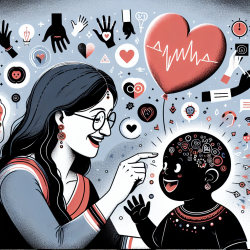Introduction
In the realm of special education and therapy services, the continuous evolution of healthcare delivery models presents both challenges and opportunities for practitioners. The recent study titled "Uptake of community- versus clinic-based antiretroviral therapy dispensing in the Central Chronic Medication Dispensing and Distribution program in South Africa" provides valuable insights that can inspire practitioners to enhance their skills and improve patient care.
Understanding the Research
The research focuses on South Africa's Central Chronic Medication Dispensing and Distribution (CCMDD) program, which offers antiretroviral therapy (ART) to people living with HIV through community- or clinic-based pick-up points. This program aims to increase convenience, reduce travel costs, and decongest clinics.
Key findings from the study include:
- Younger age and full-time employment are associated with higher uptake of community-based pick-up points.
- Higher self-efficacy and lack of perceived barriers to care increase the likelihood of choosing community-based options.
- Convenient location and hours of pick-up points are significant factors influencing patient choice.
Implications for Practitioners
Practitioners can leverage these findings to enhance their service delivery models by considering the following strategies:
- Tailor Services to Patient Demographics: Understanding that younger patients and those with full-time employment prefer community-based services can help practitioners design more targeted interventions.
- Enhance Self-Efficacy: Programs that build patient confidence and reduce perceived barriers can improve adherence to treatment plans.
- Focus on Convenience: Ensuring that therapy services are accessible in terms of location and timing can significantly improve patient satisfaction and retention.
Encouraging Further Research
While the study provides a strong foundation, further research is needed to explore the long-term outcomes of community-based ART dispensing. Practitioners are encouraged to conduct additional studies to assess the impact of these models on patient health outcomes and clinic congestion.
Conclusion
By integrating the insights from this research into practice, practitioners can enhance their service delivery, improve patient outcomes, and contribute to the broader goal of decongesting healthcare facilities. Embracing community-based models can lead to more efficient and patient-centered care.
To read the original research paper, please follow this link: Uptake of community- versus clinic-based antiretroviral therapy dispensing in the Central Chronic Medication Dispensing and Distribution program in South Africa.










